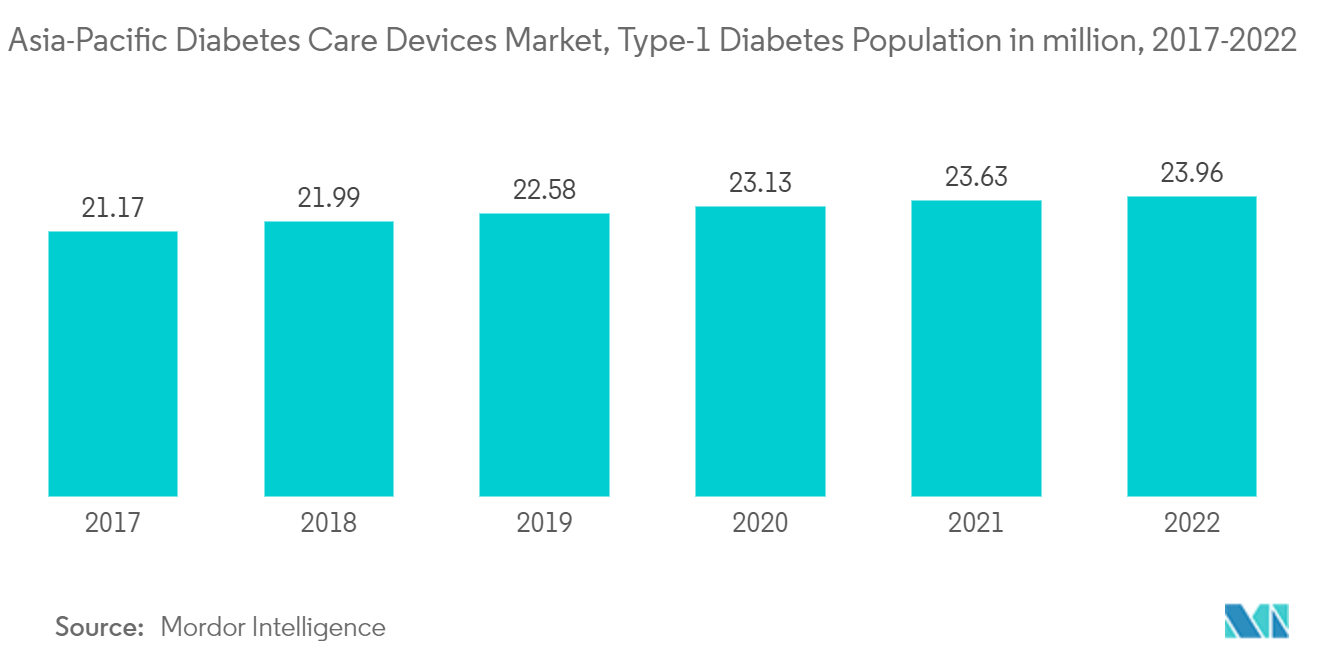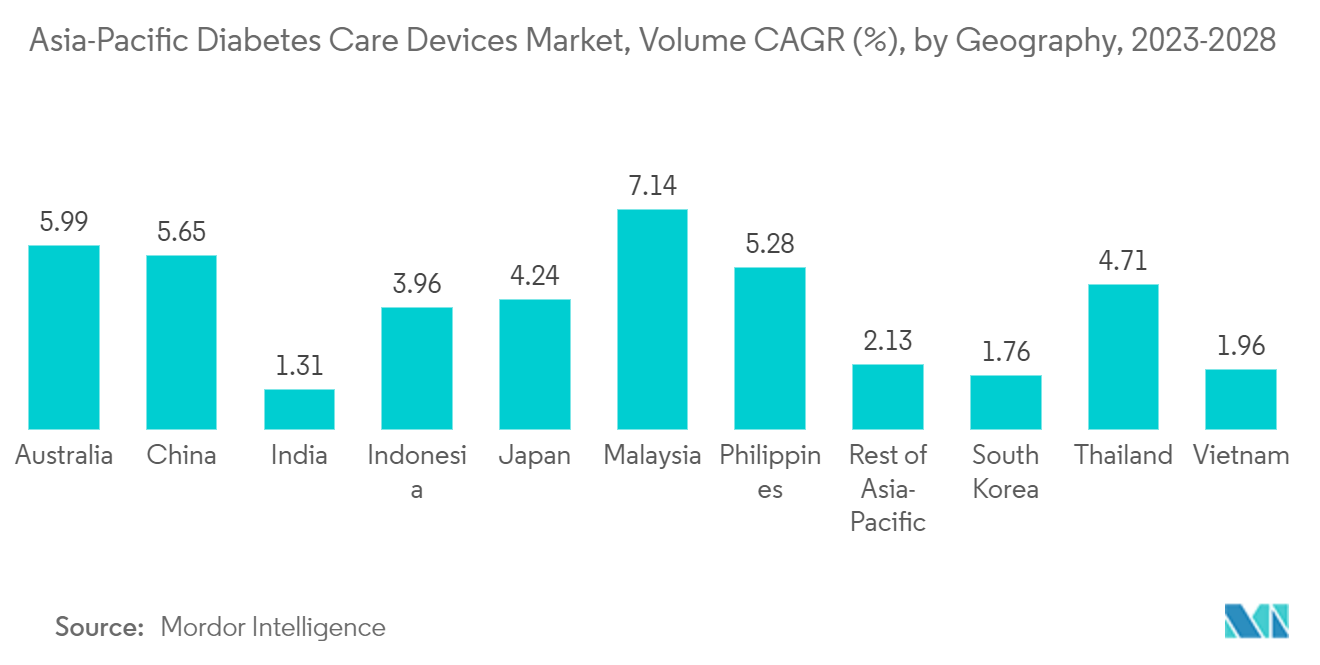Market Trends of Asia-Pacific Diabetes Care Devices Industry
The continuous glucose monitoring segment is expected to witness a healthy growth rate over the forecast period
The continuous glucose monitoring segment is expected to witness a CAGR of 11.7% over the forecast period.
Continuous Glucose Monitoring Devices are automated glucose monitoring systems that consist of a small device that can be worn on the body and held on by an adhesive patch. The sensor part of the device contains a cannula inserted into the top layer of skin and uses interstitial fluid samples to check glucose levels. Sensors are connected to a transmitter that can send data wirelessly to a dedicated mobile receiving device or smartphone. Using CGMs for people with diabetes and their caregivers and communities is beneficial for managing their blood glucose and insulin levels to maintain their health outcomes. CGM makes it significantly easier to manage blood glucose levels by decreasing interruptions and allowing for better sleep. It also improves the mental health of patients or caregivers by reducing the overall mental load of managing diabetes, thereby enhancing the market prospects in the coming years.
Continuous glucose monitoring sensors use glucose oxidase to detect blood sugar levels. Glucose oxidase converts glucose to hydrogen peroxidase, which reacts with the platinum inside the sensor, producing an electrical signal to be communicated to the transmitter. Continuous glucose monitoring became a popular alternative to the portable finger-prick glucometers available in the market for the convenience of diabetic patients. Sensors are the most important part of continuous glucose monitoring devices. Technological advancements to improve the accuracy of the sensors are expected to drive segment growth during the forecast period. Various promising glucose-sensing technologies, from traditional electrochemical-based glucose sensors to novel optical and other electrical glucose sensors, are developed, positively impacting the market growth.
The market players are adopting various strategies and innovations to increase market share. For instance, In July 2021, Terumo Corporation announced the launch of the Dexcom G6 continuous glucose monitoring system in Japan. US-based Dexcom manufactures the Dexcom product, and Terumo holds the exclusive distribution agreement of Dexcom Products in Japan.
Thus, the abovementioned factors are expected to drive the segment growth over the forecast period.

Japan is expected to dominate the Asia-Pacific Diabetes Care Devices Market over the forecast period
Japan is expected to hold the highest market share in the Asia-Pacific Diabetes Care Devices Market over the forecast period.
Diabetes emerged as a global epidemic. Japan includes around 11 million people with diabetes, according to IDF 2021 data. While Type 1 diabetes is caused by an immune system malfunction, Type 2 diabetes is linked to leading a sedentary lifestyle, resulting in inherent resistance to insulin. Japan includes one of the largest elderly populations in the world, which is more susceptible to the onset of type 2 diabetes. As Japan's population continues to age, the prevalence of diabetes also increases. Monitoring and managing blood glucose levels are rising to avoid negative consequences, such as cardiovascular diseases, kidney disorders, etc.
Diabetes is identified as a healthcare priority by the Ministry of Health, Labour, and Welfare. The high prevalence of type 2 diabetes is associated with a significant economic burden. The costs of diabetes are increased in patients with co-morbidities such as hypertension and hyperlipidemia and in patients who develop complications. Costs increase with an increasing number of complications. Well-organized medical insurance systems cover all medical fees for diabetes mellitus, and people with diabetes can visit doctors freely in Japan. Also, insulin therapy by self-injection became legal and is covered by health insurance. The Japanese healthcare system comprises a few disease management programs conducted by the Japan Association for Diabetes Education and Care. Japan is one of the regional leaders in Asia-Pacific in terms of diabetic public health policies.
Such advantages helped the increased adoption of these products in the Japanese market.


